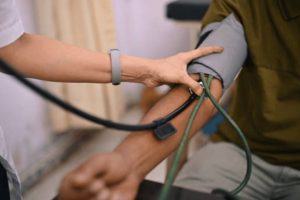Content Attributes
Technology is rapidly changing the working dynamics in all sectors of society. Our dependence on technology is not hidden at all. Healthcare is no exception to the increasing integration of technology. From robotic arms performing surgeries to machines taking care of patients, technology amazingly merges into the healthcare sector. All these changes and up-gradation are for the sake of improved patient care.
Healthcare is facing the challenge of dealing with loads of data and patient health-related information. Thus, the desire to receive on-time and accurate information has led to increased application of health informatics in the current healthcare system. The relevance of health information technology is spreading to various areas such as administration and coordination, handling and dissemination of patient data.
Benefits of health informatics in healthcare
The incorporation of health informatics in healthcare has removed physical boundaries. Now, various departments and systems such as administrative, financial, and clinical collaborate in real-time to make the right choices for patient care. The traditional methods could store the information. However, their inability to share it with other systems timely is successfully mitigated by health informatics. Thus, technology has removed the barriers experienced in the past about the collaboration of systems.
Why is there an increasing need for health informatics experts?
There is no denying that health informatics is transforming the traditional ways of communication and intra-departmental integration. However, the system is still at the mercy of experts who know how to use technology in healthcare. Thus, the market requires more health informatics experts.
Different universities respond to the market’s need by offering various online health informatics masters and bachelor-level programs to fill this gap. The advantage of registering in an online program is that you can continue working alongside your degree. Thus, practice and education go side by side.
Following are some of the ways health informatics is revolutionizing the healthcare system.
Better and on-time treatment
The application of information technology in healthcare is improving service provision. The IT industry’s amalgamation into healthcare is opening up new ways of service provision. Families can contact their clinicians about their patient’s conditions, share critical information, and call for help in emergencies. The quick data sharing reduces lag time in waiting for a medical service, hence pace up service provision.
Improve coordination
Healthcare is becoming increasingly diverse and more focused. There are more specializations and departments. It also implies that one person gets treated from various departments in a hospital. Hence, coordinating with them can become a challenge.
Health informatics is revolutionizing the way coordination and communication happened in various areas of healthcare. Patient reports, such as blood tests, x-rays, discharge instructions, and condition summaries, can travel from one department to another through electronic means. Thus, patients can get a better diagnosis of their condition.
It is not difficult to say that the system would have been in chaos without proper coordination of activities. The application of IT in healthcare can improve record-keeping and synchronization of data across medical departments.
Making healthcare cost-effective
The cost of receiving healthcare services is growing day by day. The time is not far when it might be out of the reach of ordinary people unless we take steps to turn the tides.
In many situations, healthcare is also wasteful, for instance, when wrong information causes repetition of procedures. You might be asked to take repetitive blood tests or x-rays in case of loss of data. Traditional healthcare is full of errors in data integration and storage.
The use of health informatics is one way of reducing the cost of treatment. Adequate and well-established health informatics can minimize the chances of loss of data and mishaps. Effective communication among departments can also improve service delivery, reducing the burden of cost on patients.
Improving efficiency
Think about when doctors had to wade through receipts and files to know the medical history of patients. There was always a chance of losing the data stored in hard copies.
Now a day doctors have extremely efficient healthcare portals and software storing all information related to patient diagnosis. Hence, recommending new medicines becomes easy by looking at previous records of prescriptions and their effectiveness in curing illnesses.
Furthermore, accessibility to accurate data has become quicker, and sifting through a massive amount of data is just a few clicks away. Simultaneously, there is no denying that the data also takes too little space, unlike hard copy records and files. Consequently, the integration of information technology into healthcare has eliminated the inefficiencies of the system.
A positive ripple effect of improved efficiencies is that the doctors are spared from repeating lengthy procedures. Their work is also getting improved, resulting in better patient treatment and care.
Enhance clinical workflow
When treating a patient, a lot of departments work together. For instance, doctors collaborate with testing laboratories and pharmacists to prescribe the proper doses to the patients. A central communication and workflow system can connect all these areas without even moving from their seat.
Doctors can communicate the efficacy of a medicine for a patient’s treatment with expert pharmacists and get professional advice. They can work together to discuss previous medication regimens and doses and make informed decisions. Health informatics make all this happen without any waste of time in transporting physical, paper-based records.
Improve patient experience
Patients come to a doctor or a medical facility to get relief from their illness. The chaos in the system in the absence of a proper flow of information and communication can delay their recovery.
Imagine when you have to visit different hospital departments to get a proper diagnosis of your ailment. The need to memories all the information and reiterate it in front of multiple clinicians can be overwhelmingly frustrating.
Besides, you can never rule out the chance of leaving out important information. IT applications in healthcare improve the patient experience by eliminating such hassles of remembering medication and treatment history.
Conclusion
Health informatics is increasingly becoming part of the healthcare systems. Today the discipline of health informatics is thriving due to exponential demand in the healthcare infrastructure. With health informatics, positive changes are happening in the healthcare system. Finally, by curbing the wasteful and unnecessary repetition of procedures, information technology makes healthcare available to even the lower strata of the population.



